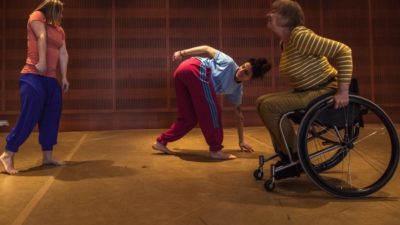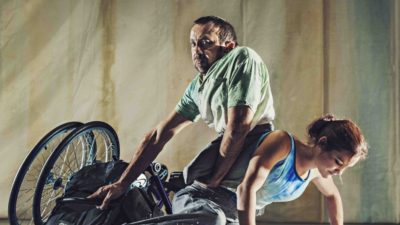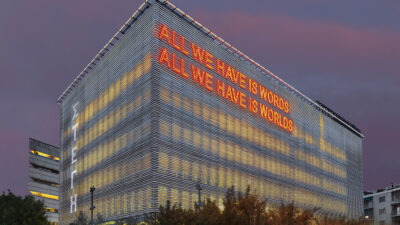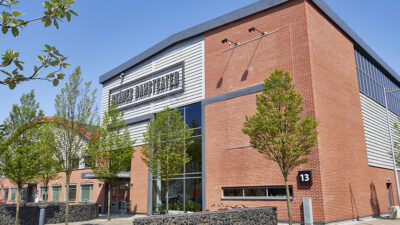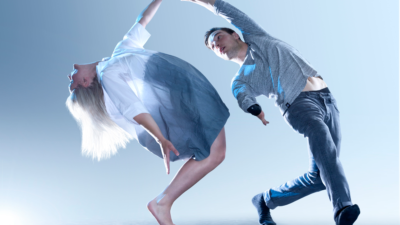iDance is a training-based collaboration between Onassis Cultural Centre, Stopgap Dance Company, Holland Dance Festival and Skånes Dansteater, which aims to improve adult learning of inclusive dance, funded by Erasmus +. Executive Producer of UK partner, Stopgap Dance Company, Sho Shibata, shares his thoughts on the project.
Click here for a reflection on the project’s progress from Onassis’ Theodora Vougiouka
How did Stopgap get involved with iDance?
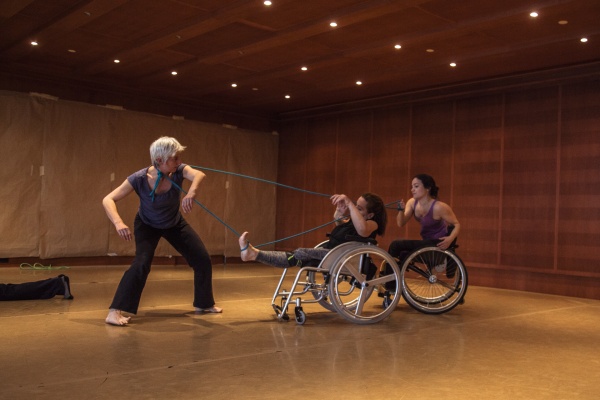
iDance came out of the EU Culture-funded project called Unlimited Access run by the British Council. Onassis Cultural Centre in Greece was one of the key partners of that, and its success motivated them and the British Council to build on the achievements by expanding the network to include Holland Dance Festival and Sweden’s Skånes Dansteater amongst others to promote inclusive arts further across Europe. The current larger network is still quite informal as they explore ways of working together I believe, but Onassis, Holland Dance and Skånes Dansteater set up iDance as a bit of a sub-group of this bigger partnership and invited Stopgap to be part of it. It’s funded through Erasmus+ so the specific remit is to explore how we develop disabled dance artists, teachers and leaders in the framework of adult learning.
What is Stopgap’s role within the project?
We were approached primarily to offer our expertise in the area of artist and teacher training in inclusive dance. We have a good track record of nurturing disabled people from the grassroots to become internationally acclaimed artists in our 20-year history, so they wanted us to impart knowledge to dance practitioners in Holland, Sweden and Greece. But the Stopgap artists saw this as a fantastic opportunity to learn from practitioners working in different contexts too.
What has Stopgap taken from iDance?
There are some really exciting disabled and non-disabled artists working in the partner countries and it’s been really good to meet them. When it comes to inclusive dance we work with a variety of individuals who all bring new discoveries to the process of inclusive creativity and their spark enhances our understanding of our own work too and how we share it. We don’t get many opportunities to lead week-long multi-country residencies because it is so costly, so for us to be able to organise that and create a platform for sharing and exchange has been a really good learning curve for us.
What will the outputs be from iDance?
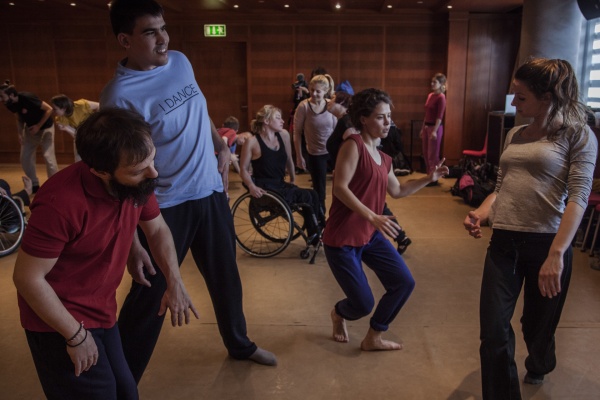
There are three main outputs, which will all be published on the iDance Website.
The first is a series of online dance exercises called Replay, which is also available on our YouTube Channel. We’ve already been making these in home-video style for a while, but the funding from iDance has enabled us make them a bit more polished. We’ve committed to launching 12 of these digital dance exercises over the next two years, and the idea is that anyone, anywhere in the world with access to YouTube can collate a series of these dance exercises and build an inclusive dance class. This is primarily useful for the partners on the project, but anyone can make use of them.
The second thing is a series of lesson plans, which will also be on the iDance website eventually. Practitioners from each country are creating and uploading these, and they are very much a cross-pollination of our respective ideas coming together.
Finally, the iDance website will have an academic paper that could be a useful resource for recruiting trainee inclusive teachers in the future. We are due to appoint an academic through the University of Bedfordshire to conduct interviews and observations with a number of inclusive dance teachers and produce a report that identify common attributes and mind-sets that good inclusive dance teachers tend to have. Onassis is leading on another paper on cross-cultural analysis, which will also be on the website.
Why have Stopgap shown such a continued commitment to international working?
We believe that our dance work has the scope to make an impact across cultures and make people think about inclusivity, collaboration and the relationship between disabled and non-disabled people. Even if we can’t go on to have a longer-term partnership with every country we visit, we could be sowing little seeds that might go on to germinate and make change in the future. There are good anecdotes of that happening both from our international work and that of Candoco Dance Company, amongst others.
Working internationally feeds our creativity too. Visiting different countries and experiencing different cultures reminds us that inclusivity and diversity should, by definition, not be just about disability. Real inclusivity in theory should be able to transcend a wider range of differences like cultural backgrounds. Seeing how other cultures view the world is hugely stimulating in that aspect.
Working internationally is a good talent-spotting exercise as well. For example, without us having done a residency in Cambodia, we wouldn’t have got to know Nadenh Poan, who joined our trainee company Sg2 in 2013. By getting to know him through our international work, we were able to commit to bringing him over to train him, and he is now touring internationally in our major productions. We’ll be rolling out Sg2 again next year, and we’re interested in international applicants for this too. More information is available here for those who are interested.
What do you think the long-term outcomes of iDance can be?
I hope that this project consolidates the relationship between the partners to further develop inclusive dance in our respective countries. The iDance website is a digital platform where we can continue to upload resources and new discoveries beyond the current funding, so I hope it will be a shared online space where the respective organisations will continue to stimulate each other.


